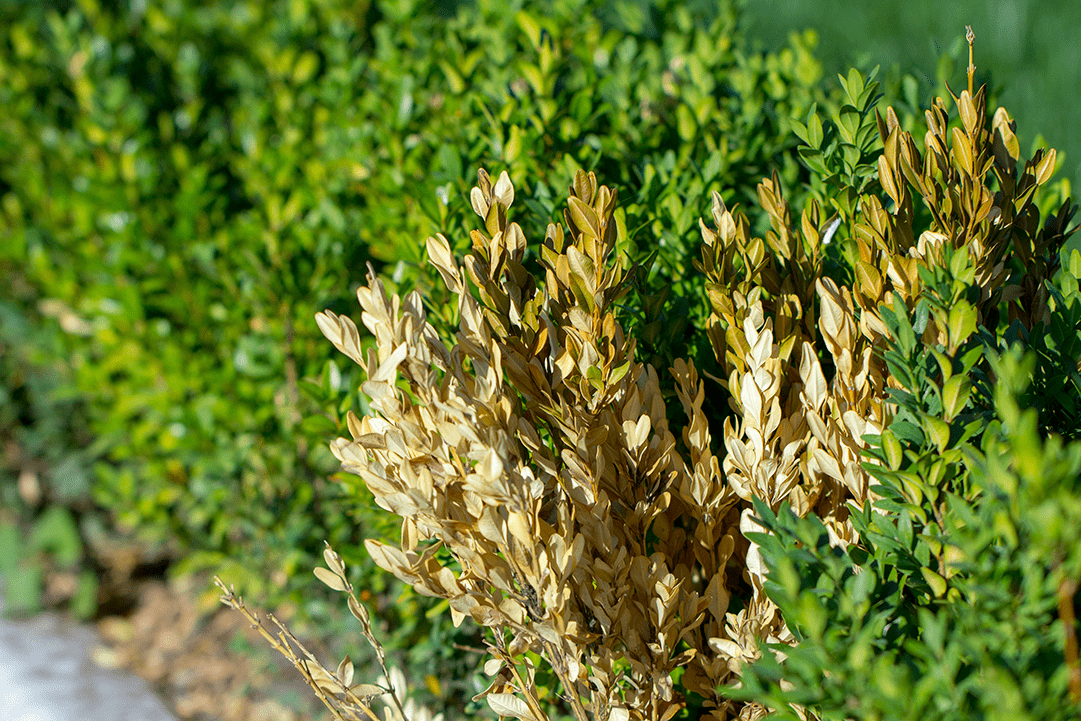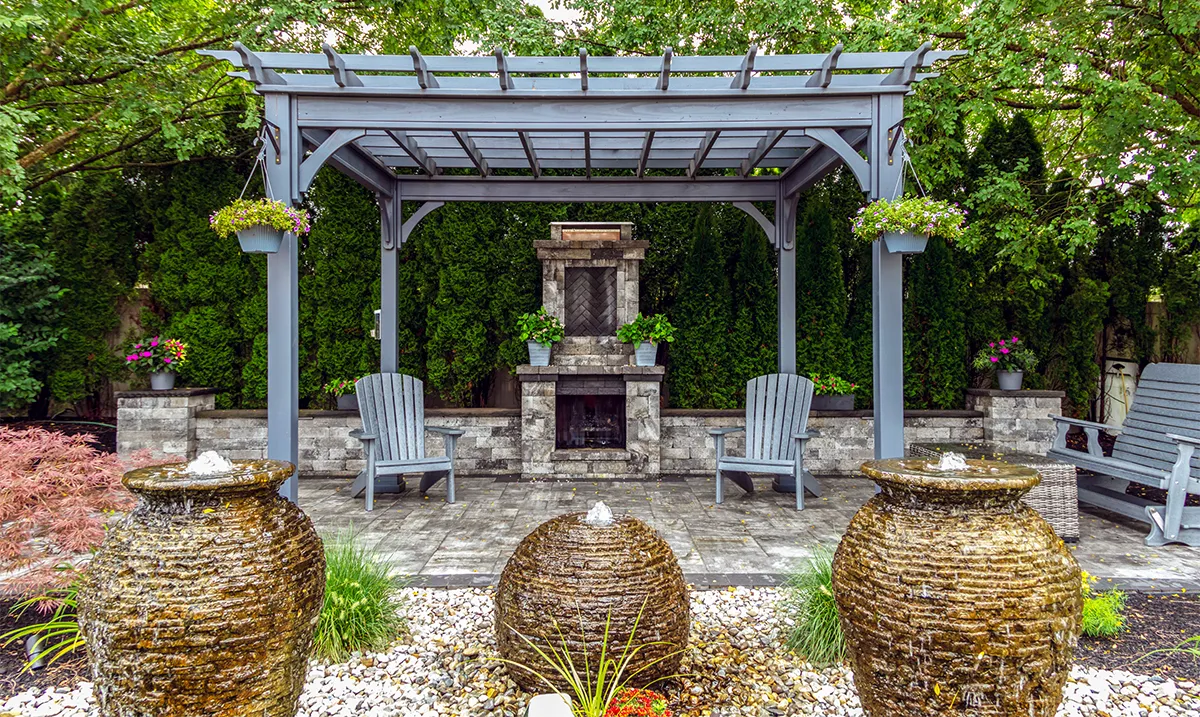Plant diseases and pests can turn a lovely landscape into a battle zone. Instead of beautification, the focus turns to simply salvaging trees, shrubs, and your wallet. Oftentimes, an infection or infestation causes months of stress and heartache—which is why it’s so important to defend your landscape proactively rather than reactively. The first step is to know a few of the most common threats in NJ:
Boxwood Blight
Boxwood blight is a fungal disease infecting beloved boxwood plants up and down the Mid-Atlantic and across the U.S. It starts with brown spots on leaves, eventually spreading to the stems as the leaves fall off. The disease can be carried through rain, wind, animals, and just about anything else.
Powdery Mildew
Another fungal disease, powdery mildew appears just as the name implies: white spots that give the appearance of dust or powder. Below the surface, the plant is losing nutrients and struggling to grow.
The problem with powdery mildew is that it spreads very quickly. Additionally, there are many different strains of powdery mildew, each requiring a specific fungicide. When powdery mildew is identified, the course of action is usually to get rid of the infected plant(s) entirely.
Lace Bug
At just an eighth of an inch long, lace bugs themselves are difficult to spot—but their affects are as clear as day. Signs of lace bug damage on leaves include holes, spots, drooping and curling. A single lace bug infestation can quickly yield several generations of the bugs. Insecticides can help, but there have been reports of insecticide-resistant lace bugs in our region.
Root Rot
Root rot is another fungus, and one that almost always results from poor drainage. Because root rot is not visible in foliage in its early stages, many homeowners find themselves in a difficult situation trying to cure advanced root rot after noticing discolored and wilted leaves. In many instances, the damage is irreversible, and the plant(s) will die.
Emerald Ash Borer
The emerald ash borer is a metallic green beetle that is extremely lethal, as it is responsible for killing more than 50 million ash trees in the U.S. This bug has been found throughout New Jersey, threatening the Garden State’s 25 million ash trees in forests and many more in backyards.
An Ounce of Prevention
What all of the above have in common is that they are much easier to prevent than to fight. The saying goes, “An ounce of prevention is worth a pound of cure.” At Integrated Plant Health Care Systems (IPHCS), we provide specially formulated treatments and a customized plant health program to keep your landscape healthy, resilient and thriving. Protect your investment and contact us today.




